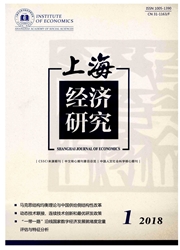

 中文摘要:
中文摘要:
通过对股票可交易过程的分解,将股票的可交易价值分解为流动性价值和波动性价值,其大小主要取决于投资组合的预期变现时间。基于无套利原理的流动性价值模型指出流动性价值主要表现为资金的时间价值。考虑现金红利的随机波动条件下,基于期权定价思想和最小二乘蒙特卡罗模拟的波动性价值模型显示:红利水平决定了波动性价值的存在与否,红利率越高,波动性价值越小,直至最后消失;预期平均波动率是波动性价值的首要影响因素,决定了波动性价值的水平;波动率的变化率是波动性价值的次要影响因素,主要表现为投资者对波动性价值可能存在的风险的认识;波动过程和价格过程的相关程度、波动的均值回复速度等因素则主要反映了波动性价值实现的可能性。
 英文摘要:
英文摘要:
With the analysis of stocks' marketability process, the paper divides the marketability value into liquidity value and volatility value. The liquidity model based on No-arbitrage Theory points out that liquidity value can be described as Time Value of Money. Considering cash dividend and stochastic volatility, the volatility model based on Option Pricing Theory and Least-Square Monte Carlo Simulation shows that the dividend rate will decide whether there is volatility value or not, the expected mean volatility rate and the volatility rate of volatility are the key and minor factor of volatility value respectively, there are positive correlation between volatility value and both of them, finally, the speed of mean-reverting of volatility and the correlation between volatility process and price process will show the possibility of the realization of volatility value.
 同期刊论文项目
同期刊论文项目
 同项目期刊论文
同项目期刊论文
 期刊信息
期刊信息
